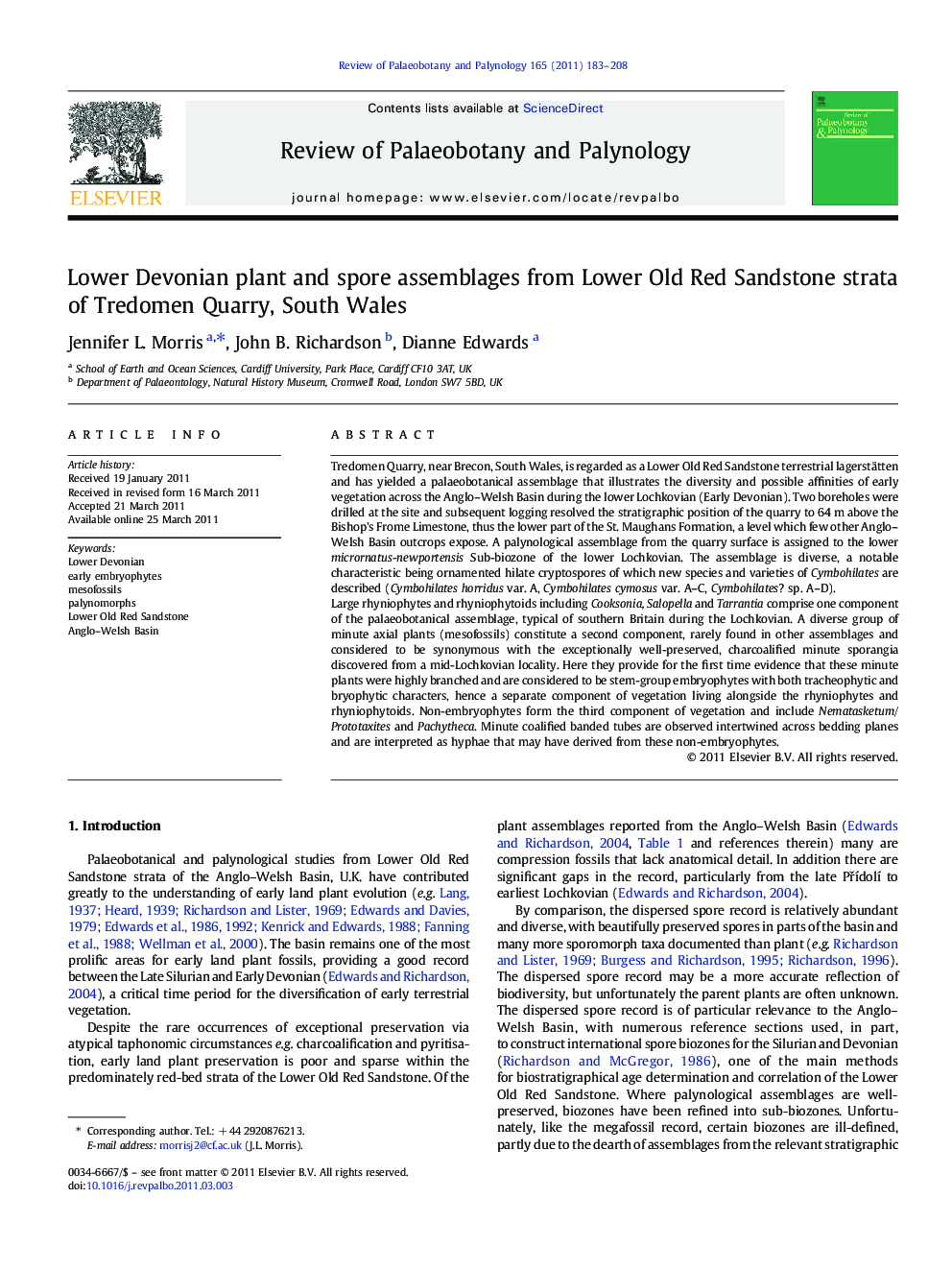| کد مقاله | کد نشریه | سال انتشار | مقاله انگلیسی | نسخه تمام متن |
|---|---|---|---|---|
| 4750929 | 1642534 | 2011 | 26 صفحه PDF | دانلود رایگان |

Tredomen Quarry, near Brecon, South Wales, is regarded as a Lower Old Red Sandstone terrestrial lagerstätten and has yielded a palaeobotanical assemblage that illustrates the diversity and possible affinities of early vegetation across the Anglo–Welsh Basin during the lower Lochkovian (Early Devonian). Two boreholes were drilled at the site and subsequent logging resolved the stratigraphic position of the quarry to 64 m above the Bishop's Frome Limestone, thus the lower part of the St. Maughans Formation, a level which few other Anglo–Welsh Basin outcrops expose. A palynological assemblage from the quarry surface is assigned to the lower micrornatus-newportensis Sub-biozone of the lower Lochkovian. The assemblage is diverse, a notable characteristic being ornamented hilate cryptospores of which new species and varieties of Cymbohilates are described (Cymbohilates horridus var. A, Cymbohilates cymosus var. A–C, Cymbohilates? sp. A–D).Large rhyniophytes and rhyniophytoids including Cooksonia, Salopella and Tarrantia comprise one component of the palaeobotanical assemblage, typical of southern Britain during the Lochkovian. A diverse group of minute axial plants (mesofossils) constitute a second component, rarely found in other assemblages and considered to be synonymous with the exceptionally well-preserved, charcoalified minute sporangia discovered from a mid-Lochkovian locality. Here they provide for the first time evidence that these minute plants were highly branched and are considered to be stem-group embryophytes with both tracheophytic and bryophytic characters, hence a separate component of vegetation living alongside the rhyniophytes and rhyniophytoids. Non-embryophytes form the third component of vegetation and include Nematasketum/Prototaxites and Pachytheca. Minute coalified banded tubes are observed intertwined across bedding planes and are interpreted as hyphae that may have derived from these non-embryophytes.
Research highlights
► Palaeobotanical–palynological analysis of Lower Old Red Sandstone strata from Wales.
► Palynological assemblages assigned to lower MN Subzone, thus lower Lochkovian in age.
► Typical lower Lochkovian Laurussian assemblage of rhyniophytoids and non-embryophytes.
► Separate group of rare, minutely branched axes with diverse sporangial morphologies.
► Tiny plants with tracheophyte and bryophyte characters may be stem-group embryophytes.
Journal: Review of Palaeobotany and Palynology - Volume 165, Issues 3–4, June 2011, Pages 183–208